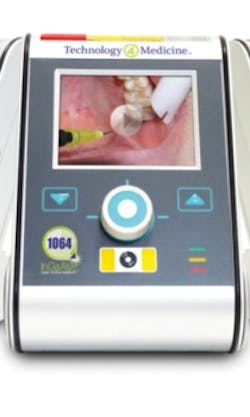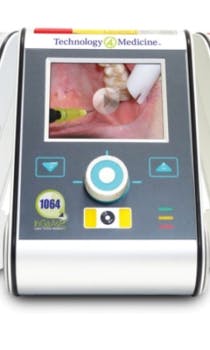Big Brother
Paul Feuerstein, DMD
For more on this topic, go to www.dentaleconomics.com and search using the following key words: Dr. Paul Feuerstein.
You are in an accident. A voice comes over your car radio and asks if you are OK. Or maybe your car breaks down. Push a button and help is on its way. You have OnStar, a system that monitors your car. What if there were something like this for your dental equipment?
During the next couple of years, manufacturers plan to insert computer network ports into dental equipment — wired and wireless — that will connect to repair centers. Initially, if your product has a problem, you will be able to push a button or send some sort of signal that will go to the repair center. The techs at the center will be able to troubleshoot the problem and send a person to your office with much more information than with the current system.
Now, we often get a visit from a tech who checks out the piece of equipment, and then leaves after ordering a part and says he or she will return in a day or two. This not only slows down the repair process but costs more for the repair company and doctor — both in charges and downtime.
As this technology evolves, there will be more interactive monitoring. An example could be a sterilizer. It could be connected to a service center and monitored electronically. If the pressure or temperature is running out of the norm, the office would get a call from the service tech, who would schedule a time to get to the office armed with the correct part. The savings to all involved would be remarkable.
One product ready to enter this marketplace is the Statim 5000 from SciCan. According to Scott Anderson, president of Patterson Dental, the infrastructure is already in place at the company’s main service facility and technology center in Effingham, Ill. He envisions a number of dental offices being tied into this center with more of the office products being monitored. In the book/movie, “1984,” there was a fear that “Big Brother is watching you.” Now it is anticipated.
iPads
iPads and other mobile tablet devices have invaded our lives. How will they show up in our dental offices? Simple, obvious applications will be offshoots of practice-management systems. Patient education is a natural. Perhaps CE live online or by subscription should be obvious ideas.
Several of the existing applications — such as CAESY, GURU, CurveED, and others — are incorporating their applications with tablets. A new company, DDS GP (www.ddsgp.com), has a dental CE “app” at a very reasonable cost available in the iTunes App Store.
An additional option is an app with instructions to the dentist and staff on how to present this education, including many pointers from Dr. Paul Homoly. Most of the current products for iPad and other tablets are focused on patient education. Watch for more aimed at practitioners with CE videos previously only available on DVD (or for elders, tape).
But how about using these units to control equipment?
Imagine an iPad attached to an electric handpiece to control the speed and torque, as well as having instructional videos, maintenance tips, and more? BienAir introduced such a unit earlier this year, the iChiropro. The obstacle of using an actual iPad is that the FDA and similar agencies do not consider it a medical device. Clever engineers will surely put similar units in our treatment rooms. In fact, a few companies have already taken the initiative.
One example is laser company Technology4Medicine. The company introduced a remarkable soft- tissue laser a couple of years ago, the 1064 XLASE, that uses a 1,064 nm wavelength. The company’s website at www.t4med.com explains the details of the smooth-cutting device.
But for this discussion, we are looking at the controls. As with others, there is a large LCD screen on this unit that has menus of procedures, settings, etc. In addition, you can pull up an instructional video with remarkable clarity, literally at your fingertips. This can be updated by the manufacturer.
Face scan
We have been watching the evolution of cone beam technology for diagnosis and treatment planning. Most of the writings for GPs have been on surgery, endo, and of course, implants. A merger of technologies will give us more information on the esthetic parts of the equation.
Planmeca and Sirona have debuted a “face scan” to go with CBCT units. This is a strobe-type camera that does a scan in the same unit and takes photos of the face. While the patient’s head is in position for the CBCT scan, the scan is performed. It can then be superimposed over the radiographic scan.
In orthognathic surgery, it would show patients what they look like initially. After digitally manipulating the mandible, maxilla, and teeth for the surgery, the postop view could then be seen. This would also apply to orthodontics, as well as crown and bridge prosthetics.
For prosthetics, CEREC and iTero have announced the merging of their intraoral scans with cone beam scans. E4D is also working with the radiography companies for a merger of its scans. Since 3M owns Imtec, you can be sure their engineers are working to this end, too.
In the orthodontic market, a scan such as Align’s ClinCheck could possibly be embedded over the CBCT scan and face scan so the posttreatment result could be shown. This is quite feasible since Align recently acquired CADENT and the iTero, so the infrastructure is already in place.
This idea has been used for years with a Patterson product called Dolphin software; however, it requires a special 3-D camera for this superimposition or extrapolation of soft tissue from the CBCT scans. The face scan should give a more accurate image and be easier to acquire. I am sure Dolphin is watching this. It is quite interesting. More information can be obtained on the company’s website at www.dolphinimaging.com/3d.html.
As dental professionals and manufacturers use their imaginations and engineers figure out what will be necessary to make these simple integrations, treatment areas will certainly begin to look more like scenes from the Jetsons cartoon.
Dr. Paul Feuerstein installed one of dentistry’s first computers in 1978. For more than 20 years, he has taught technology courses. A general practitioner in North Billerica, Mass., since 1973, Dr. Feuerstein maintains a website (www.computersindentistry.com) and can be reached at [email protected].

